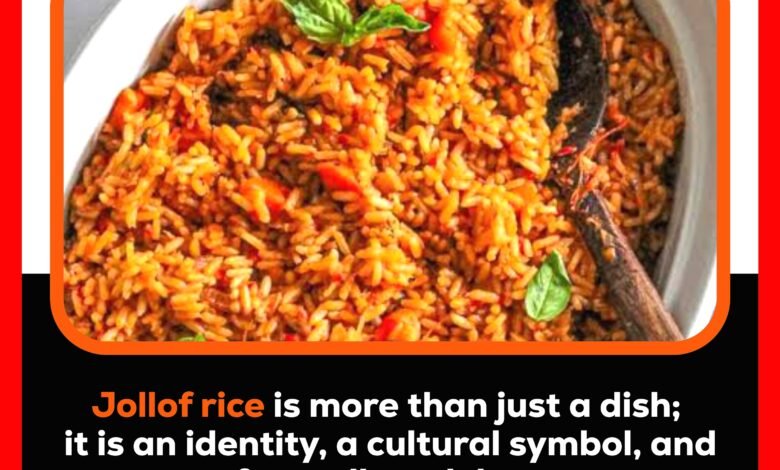JOLLOF RICE

Jollof rice is more than just a dish; it is an identity, a cultural symbol, and a cause for endless debate across West Africa. This flavorful, tomato-based rice dish traces its roots back to the Senegambian region, where the Wolof people believed to be its original creators introduced it to the world. Since then, it has travelled across borders, adapting to the tastes and preferences of different countries.
Nigeria, Ghana, and Senegal each claim to have the best version, and the rivalry is nothing short of passionate. Nigerian Jollof is rich and smoky, cooked with tomato paste, peppers, and a unique blend of spices that give it a bold flavour. Ghanaian Jollof, on the other hand, is slightly milder but just as delicious, often prepared with fragrant basmati rice. Senegalese Jollof, or “Thieboudienne,” is the most traditional, featuring fish, vegetables, and unique cooking technique that sets it apart.
The Jollof wars have even reached the global stage, with celebrities and chefs weighing in on which country does it best. British chef Jamie Oliver once attempted to create his own version, only to be met with intense backlash from West Africans who argued that he had tampered with their beloved dish.
But beyond the friendly competition, Jollof rice represents something deeper it is a meal that brings people together. Whether served at weddings, parties, or Sunday family gatherings, Jollof rice is the heartbeat of West African cuisine. No matter which country perfected it, one thing is undeniable: Jollof rice is more than food; it is a heritage, a tradition, and a taste of home.





